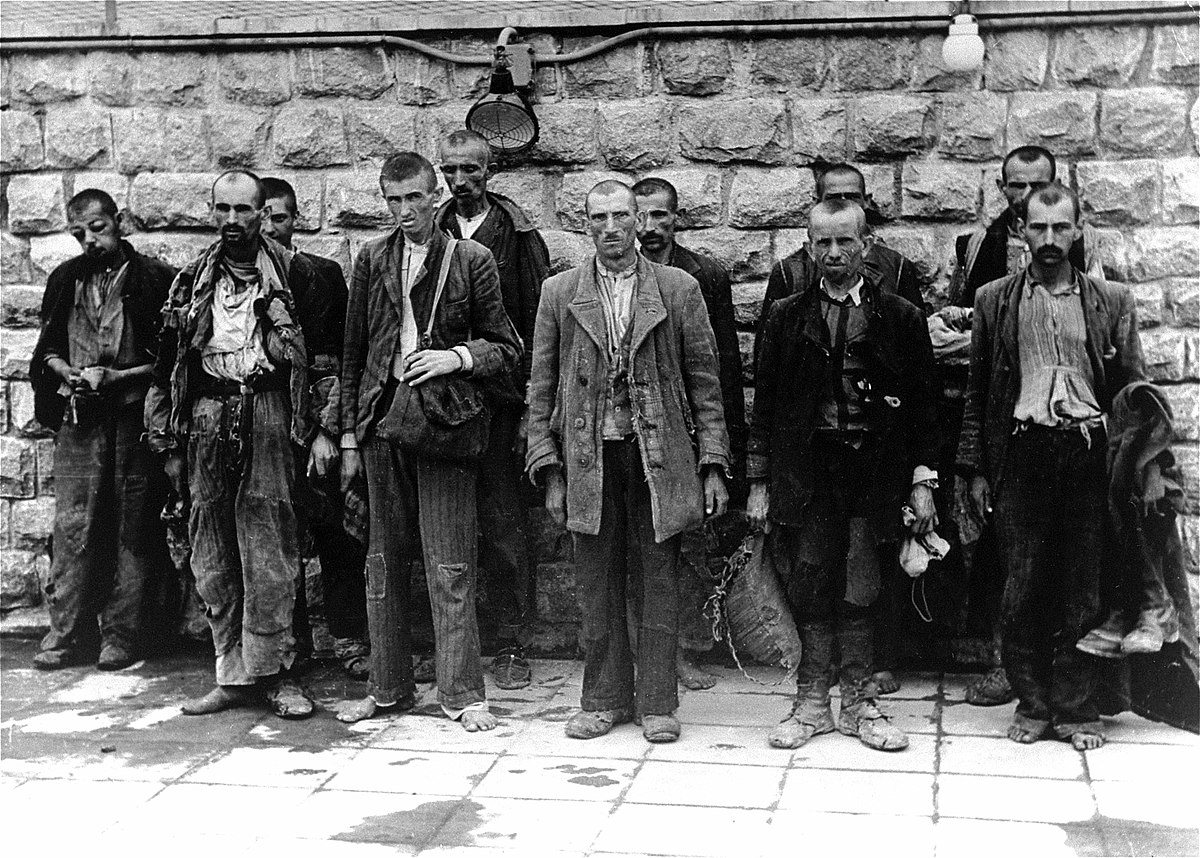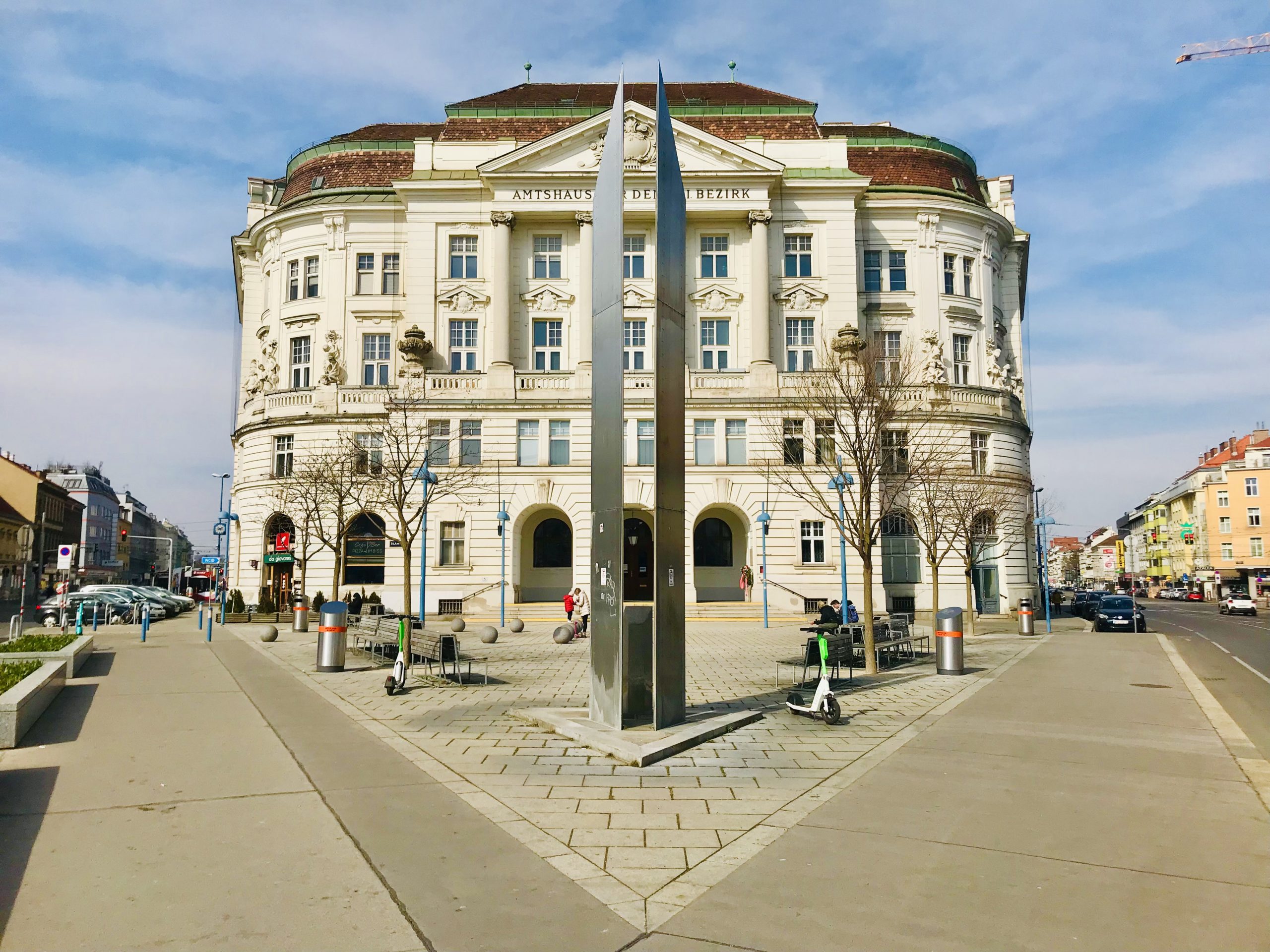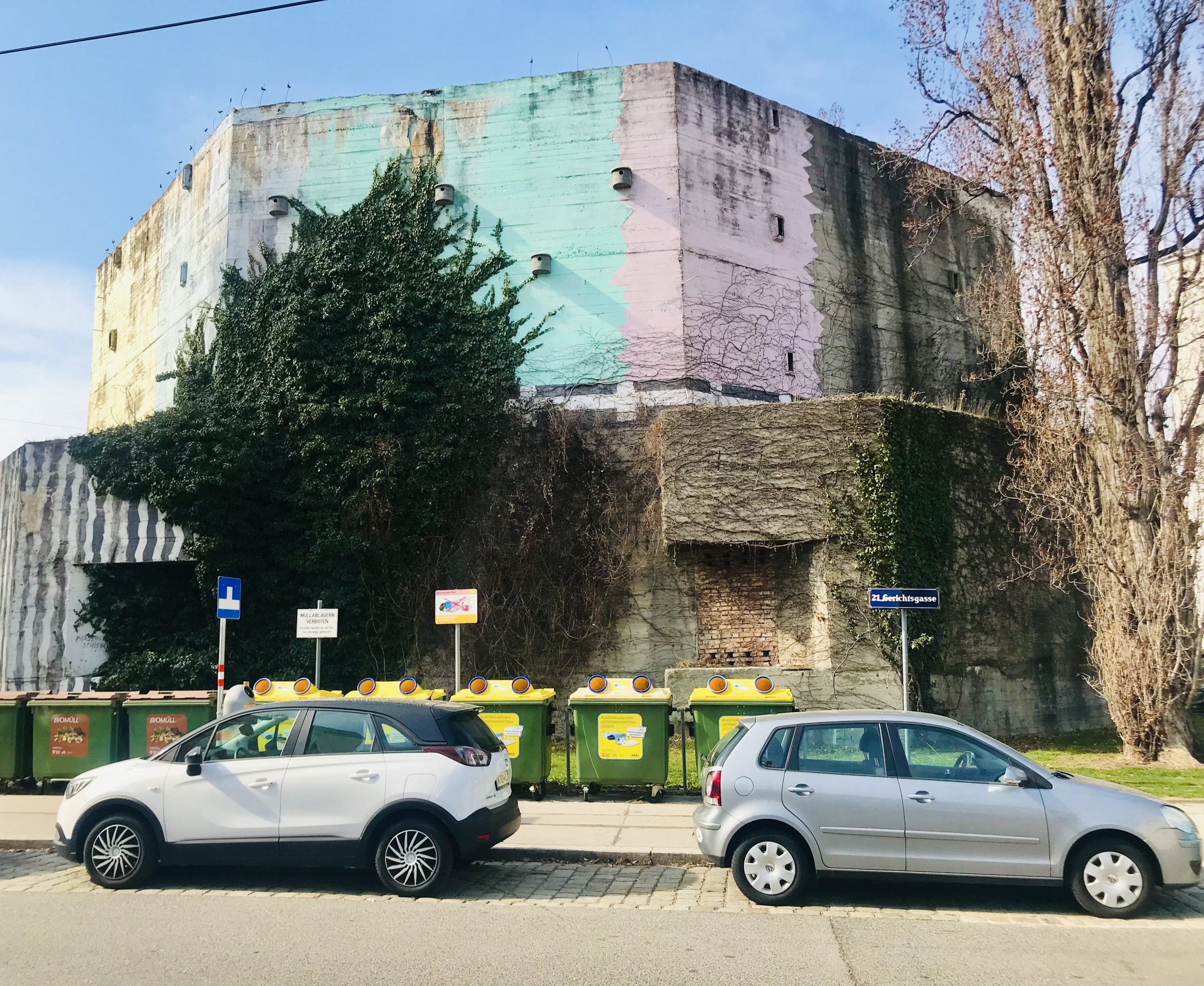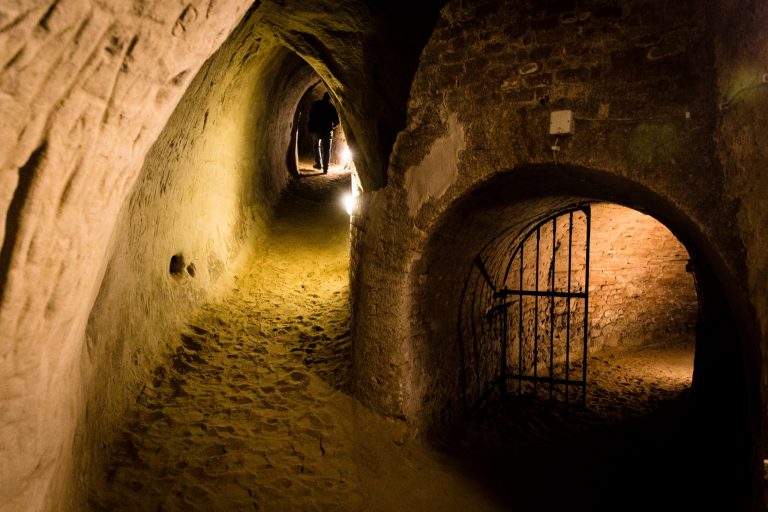
RETZ HAS A BEAUTIFUL MEDIEVAL SQUARE AND THE MOST EXTENSIVE NETWORK OF UNDERGROUND WINE CELLARS IN CENTRAL EUROPE
Table of Contents
What Austrian town can boast of having a wonderful medieval square as well as the longest network of underground wine cellars in Central Europe? Retz, of course.
Upon first glance, the walled city of Retz appears to be just another beautiful town in Lower Austria. Yet, underneath the cobblestoned streets is an enormous labyrinth of wine cellars and tunnels with a unique history. The Retz wine cellars are a city beneath a city!
A BRIEF HISTORY
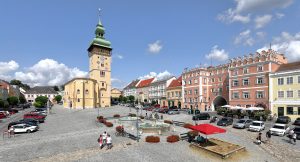
The first mention of the village of Retz was in 1180 when it was referred to as Rezze, the Slavic word for small creek. In the late 13th century, Rudolph von Hapsburg presented Count Berthold of Rabenswalde with Hardegg, a town located in the Waldviertal region of Lower Austria (bordering the Czech Republic). Having little interest in Hardegg, the Count packed up and relocated to Retz which he officially founded around 1300. Naturally, as a good resident of the town, the Count funded the construction of a Dominican monastery in 1295.
Things were relatively peaceful in Retz until November 1425, when the Hussites invaded. Retz was completely burned to the ground and its inhabitants were either killed or enslaved. Historical documents tell us that 6000 captives were marched to Prague. In the end, 8000 men were executed and over 30 Catholic churches were reduced to rubble. Not feeling fulfilled, the Hussites returned to Retz a second time in 1431 and invaded the city again.
So what about Retz wine? During the early 1400’s, Retz started gaining notoriety for the quality of its red wine. Given the city’s unique location, Retz started to become a trading hub for wine as well. In 1458, the Holy Roman Emperor Friedrich III issued privileges granting every citizen the legal right to barter with wine. As such, goods and services were paid for in wine. Additionally, since Retz was a border town, traders paid their customs taxes in wine.
As the city flourished and became more prosperous, the citizens needed a place to store this massive influx of wine. They turned their attention underground and vigorously expanded their existing network of wine cellars. In 1486, the Hungarian King Matthias Corvinus invaded Retz and laid siege to the town. After six days, Matthias breached the city’s walls and the citizens of Retz capitulated. On 10 October 1486, Matthias entered the city and pardoned its inhabitants. Then, Matthias ordered ten neighboring villages to submit their fermented wine to the town. Importantly, Matthias allowed the citizens of Retz to export their wines to Northern Europe.
Notably, Retz wines were consumed in the court of the Grand Duke of Moscow, Ivan III of Russia. With Matthias’ decrees, word of Retz wine spread and the city’s future role as a wine trading hub was cemented.
THE RETZ UNDERGROUND WINE CELLAR NETWORK
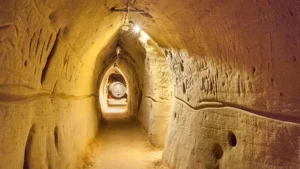 weinviertal.at
weinviertal.at
As early as 1278, the citizens of Retz used their cellars to store and mature their wine. As Retz grew as a wine trading hub, homeowners began uncontrollably expanding their wine cellars however they pleased. The cellars grew in scope and length with many branching off into additional tunnels having multiple levels. Most of the 13 miles of cellars in Retz are interconnected on one main level with the deepest cellars lying 65 feet underground. In total, the cellars are roughly twice the length of the streets above ground — a city beneath a city!
Retz rests on over 100 feet of quartz sand and was a coastal area during the Miocene period over 25 million years ago. Originally, cellars were dug directly into the ancient beach sand and the tunnels were neither supported nor brick-lined. A thin layer of loam sits above the sand deposits protecting the cellars from precipitation. A result of the permanently moist beach sand, the cellars always have 88% humidity and the temperature ranges between 46-50 degrees Fahrenheit (10 degrees Celsius) which makes Retz the ideal place to store wine.
During the 19th and 20th centuries, some cellars were lined with brick. Although giving the appearance of added structural integrity, the bricks were merely a visual symbol of prestige. Interestingly, many of the cellars have survived in their original state when they were dug from the beach sand centuries ago. During WWII, the Nazis planned to use the wine cellars of Retz to produce airplane parts. The 88% humidity quickly put an end to these intentions.
Although the Retz wine cellars are interconnected, each house was required to have its own cellar entrance. Worth noting, the dimensions of the individual cellars do not correspond to the property lines under which they were built. Wealth dictated everything — if you could afford to buy a large amount of wine, then you would lengthen or deepen your cellar as you wished.
To maintain a consistent humidity level, the cellars were well ventilated. Numerous vent shafts lead up to the streets, alleys, yards, and gardens of Retz. Today, the Retz wine cellar network has not fully been explored and archeologists believe that there are several more miles of tunnels in the network.
ARCHITECTURE ON THE MAIN SQUARE
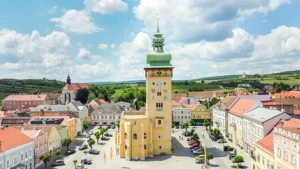 weinviertal.at
weinviertal.at
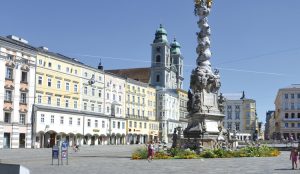 wikimedia commons
wikimedia commons
The ornate buildings and gorgeous hauptplatz or “main square” in Retz are a direct result of the town’s prosperity from the wine trade. The main square is the second largest in Austria (after Linz). In honor of the town’s heritage, during the last weekend in September, the two fountains in the main square flow with white and red wine. The festival is known as Retzer Weinwoche or Retz Wine Week and each participant is allowed a thirty-second opportunity to fill their drinking vessel of choice. After all, it is said that in Retz, there is more wine than water. True!
The impressive Rathaus or Town Hall has a prominent place on the main square and previously served as a church until 1569 when it was converted into the town hall.
A unique residence on the corner of the main square, the Sgraffitohaus or “Graffiti House” was built in 1546. Sgraiffito is an Italian technique where the house exterior is paintedwith two different colored layers. Artisans then scratch off the top layer to create designs. The Graffiti House was ornately painted with scenes from Greek mythology and classical history. Painted over during the centuries, the paintings were discovered and exposed again in 1928.
The eye-catching Verderberhaus or “Verderber House” built in 1583 was purchased by the Verderber family in 1848. The Verderber House is built in the style of the Venetian Renaissance.
Another interesting structure is the Schloss Gatterburg or “Gatterburg Castle” completed in 1670. Today, this building is home to the Fahrrad Museum or bicycle museum of Retz.
Similar to most small towns in Austria, a Pestsäule or “Plague Tower” stands prominantly in the town square to honor those who survived the Bubonic Plague of 1680.
Check this out — at one time, there were 40 plus windmills in Retz, grinding grains into flours for local breads. Today, the one remaining functional windmill in Austria is in Retz. Built in 1853, it churns out flour used to make traditional windmühlenbrot or windmill bread. Of note, the windmill appeared in the Disney film The Three Musketeers (1993).
OUR EXPERIENCE AT THE FASCINATING RETZ WINE CELLARS
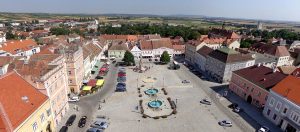 wikimedia commons
wikimedia commons
My wife, teenage son and I spent a wonderful day exploring Retz and the main square. The square is majestic and you really get a sense of the prosperity that existed in Retz.
Purchasing tickets to tour the extensive wine cellars, however, is incredibly confusing. To purchase your tickets to tour the Retz Underground Wine Cellars you must go to the Tourist Information Center located at Hauptplatz 30 (on the main square). Once you purchase your tickets, you will then need to meet your guide at the Rathaus at a designated time. The guide will escort you through the main square to the Cellar entrance — about 1000 feet away. As the Retz wine cellar tour is provided only in German, there are audio devices available in English and other languages. The tour ends where you began — you emerge from underneath the Rathaus.
At the start point, there is a really detailed map of the underground network of Retz wine cellars painted on the wall. Although most visitors will walk right past it, do not do this. Give the map a good look as it will show you the path you are taking. The network of tunnels is pretty insane and in some places is three stories deep.
A bit on the cheesy side, there is a history of wine exhibit that coincides with the route through the wine cellars. That said, we did learn quite a bit about the region and its history.
The tour lasts about 90 minutes and requires a bit of walking. The surface is flat, although the tunnels are not that well lit. At the end of the tour, you emerge in a wine tasting room and are rewarded with several local wines featured by the vintner of the day.
Overall, we greatly enjoyed the experience and it made for a wonderful day out in the countryside.
PRO TIPS WHEN VISITING THE RETZ WINE CELLARS
 weinviertal.at
weinviertal.at
Here is a list of PRO TIPS to help you enjoy visiting the Retz Wine Cellars and other historical sites and nearby attractions.
PRO TIP 1 — VERY IMPORTANT. Purchase tickets for the tour of the Retz Wine Cellars at the Tourist Information Office located at Hauptplatz 30 on the main square. Be mindful that they accept only cash. You will then walk across the main square to the Rathaus to meet your Guide and start the tour. Arrive early to avoid potential problems.
PRO TIP 2 — VERY IMPORTANT. The Retz underground Cellar tour is fantastic for children and at one point, the guide will stop and allow the children to fill a bag of Miocene period beach sand as a souvenir. If this does not happen, then say something!
PRO TIP 3. Parking is available in the main square or on the side streets just outside the main square. Your GPS may give you the wrong location for the Retz Wine Cellars, so make sure you use Hauptplatz 30, Retz as your address. CLICK HERE for directions to the Retz Wine Cellar TICKET OFFICE.
PRO TIP 4. For a local winery and heuriger, we recommend a meal at the Bergmann Heuriger Retz – a contemporary establishment located near the Windmill.
PRO TIP 5. RATHAUS TOWER VIEWING PLATFORM. Enjoy the panoramic views from the viewing platform at the top of the Rathaus tower (128 steps). Admission is EUR 1.00 and you insert a coin to enter.
PRO TIP 6. To tour the Retz underground wine cellars, you must have a tour guide. The tours runs 90 minutes and there are only 1-2 English tours so you may need to email [email protected] to confirm availability. Tour times are pretty random so definitely check ahead if possible.
PRO TIP 7. The tour involves walking on cobblestone, some stairs (up/down), and mostly flat surfaces. The Cellars are well lit and are consistently cool at 48 degrees Fahrenheit (10 degrees Celsius) on a hot summer day. While you are waiting for your Cellar tour, I recommend exploring the main square on your own and having a coffee or wine at one of the local cafes or restaurants.
PRO TIP 8. If you have the Lower Austria Card (known as the Nieder Oestereich card), you receive FREE ADMISSION. To purchase, please see Nieder Oesterreich Card – Retz Underground Wine Cellar. PLEASE NOTE: You will need Google Translate to view in English.
NEAR THIS PLACE
GALGENBERG WINE CELLAR ROAD. Welcome to the Wine Cellar Road of Galgenberg with over 180 wine cellar houses built into the scenic countryside. Walk, bicycle or jog and enjoy.
VIENNA WINE TOUR AND HIKING DAY. The Vienna wine trails, an annual scavenger hunt for oenophiles in the scenic city outskirts. Enjoy a glass of wine, as you walk from vineyard to vineyard.
TRAVEL GUIDE | EASY SCENIC HIKES NEAR VIENNA. Explore one of the many dog friendly scenic hikes near Vienna. There are castles, wild life, ancient roads, and fresh air.
HAGENBRUNN: VINTNERS, VINEYARDS, AND HEURIGE. Hagenbrunn, an entire village of vintners, vineyards, and heurige east of the Danube. Enjoy a great day out at this off the beaten path location.
MEMORIAL OF THE IRON CURTAIN. The last remaining section of the Iron Curtain is preserved in the small village of Čížov, Czech Republic along the border where East once met West.
VOICEMAP | TELC SELF GUIDED WALKING TOUR. Experience the pretty town of Telč with its spectacular medieval square, baroque-renaissance architecture, and vibrant history. The Painted Ladies of Telč are among the many wondrous features of this UNESCO designated fairytale town that really has it all.
WINDMILL MUSEUM. A 15-minute walk from the Retz underground wine cellars, the windmill is one of the last two operational grain mills in Austria. It was also a movie location used in the Disney film The Three Musketeers (1993). FREE ADMISSION if you have the Lower Austria Card at Nieder Oesterreich Card – Windmill Museum.
BICYCLE MUSEUM. One man’s passion, this exhibit is focused on the history of bicycles from 1820 to the present. Highlights include 225 historical bicycles, wheels, two-pedal crank wheels, and steam tricycle models with original blueprints. FREE ADMISSION if you have the Lower Austria Card at Nieder Oesterreich Card – Bicycle Museum.
BEST PLACES TO STAY
VINOSPA – HOTEL ALTHOF RETZ. An elegant hotel with a relaxing infinity pool and top-notch spa services available to guests. ADDRESS: Althofgasse 14, 2070 Retz, Austria.
SONNENHUGEL WINERY. A family-operated winery with four guest rooms on-site and access to the vineyard, wine tasting, and more. ADDRESS: A-2074 Unterretzbach, Herrengasse 59, Retz, Austria.
SO/ VIENNA. Designed by the famous architect Jean Nouvel, this stylish hotel is near all of the sites. Panoramic views over Vienna, a gourmet restaurant, a gym, and FREE spa facilities. Modern, spacious rooms with air conditioning, FREE mini-bar, and FREE Wifi. ADDRESS: Praterstraße 1, 02. Leopoldstadt, 1020 Vienna, Austria
RUBY LISSI HOTEL VIENNA. Boutique hotel located in an 18th-century building in Vienna’s first district. Luxuriously furnished rooms with air conditioning, wooden floors, use of tablet device and FREE Wifi. Each room has a Marshall amplifier and guitars can be rented. Organic breakfast and 24/7 access to Italian antipasti and snacks, beverages and selected wines. ADDRESS: Fleischmarkt 19 / Laurenzerberg 2, 01. Innere Stadt, 1010 Vienna, Austria.
BOOKSHELF
The Three Musketeers by Alexandre Dumas
FILM + TV
RESOURCES
Bergmann Winery and Heuriger Retz
![]()





